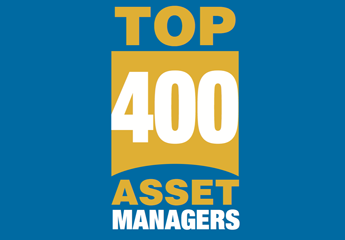APG, asset manager for the €309bn Dutch civil service scheme ABP, has again topped the ranking of asset managers in the Netherlands, according to IPE’s 2014 Top 400 Asset Managers survey.
Aegon Asset Management and Robeco group came second and third, respectively – with assets under management (AUM) of €239bn and €205bn, respectively – while ING Investment Management International came in fourth place.
With assets of almost €155bn at year-end, PGGM, the asset manager for the €140bn healthcare scheme PFZW, came fifth.
PGGM also saw the steepest rise – of nearly €22bn – in AUM.
It attributed the increase mainly to the addition of two new clients – the €8.5bn scheme for general practitioners (SPH) and the €5bn pension fund for painters and decorators (Schilders).
The remaining growth was due to returns on investments, as well as a net inflow of contributions of at least €2.5bn from the predominantly young participants of the healthcare scheme, according to spokesman Maurice Wilbrink.
| Company | 2014 Total | 2013 Total |
|---|---|---|
| 31/12/13 (€m) | 31/12/12 (€m) | |
| APG | 343,000 | 324,000 |
| Aegon Asset Management | 239,739 | 244,842 |
| Robeco Group | 205,230 | 189,310 |
| ING Investment Management International | 174,124 | 182,826 |
| PGGM | 154,898 | 133,081 |
| MN | 92,238 | 90,464 |
| Syntrus Achmea Asset Management | 69,730 | 66,220 |
| Delta Lloyd Asset Management | 48,800 | 51,400 |
| SNS Asset Management | 44,200 | 44,000 |
| Kempen Capital Management | 31,430 | 28,460 |
| TKP Investments | 17,261 | 16,584 |
| SPF Beheer | 16,300 | 15,750 |
| Theodoor Gilissen Bankiers | 10,000 | 10,000 |
| Bouwinest Real Estate Management | 6,060 | 5,800 |
| BNG Vermongensbeheer | 5,100 | 6,400 |
| Altera Vastgoed | 1,839 | 1,708 |
PGGM’s assets increased to almost €170bn over the first six months of 2014, as a result of an average return of 8%, the addition of €500m pension fund Smurfit Kappa Netherlands and net contributions of €1.7bn.
Meanwhile, APG’s assets rose by €19bn to €343bn over 2013, almost entirely due to “solid” returns on investments, according to spokesman Harmen Geers.
ABP reported a net return of 6.2% over 2013.
As of the end of 2013, it was Europe’s fourth-largest asset manager, with PGGM taking ninth place.
Over the first five months of 2014, APG’s assets increased by €26bn to €369bn, thanks to average returns of 7.5% for its clients, as well as interest hedges.
Robeco attributed the €16bn increase in its AUM to a strong investment result, supported by the continuing recovery of financial markets.
It also cited considerable investor interest in its equity and hedge funds capabilities, adding that inflows in the US came mainly from retail clients.
According to the Rotterdam-based asset manager, 47% of its assets are from institutional investors.
It added that this share had hardly changed last year.
The former Rabobank subsidiary was taken over by Japanese financial services group Orix Corporation, which said it was committed to supporting Robeco’s current strategies and processes.
It left Robeco’s managing board, including its chief executive Roderick Munsters, in place, and said it would keep its Rotterdam-based head office.
Meanwhile, Robeco has indicated that it plans to set up a London sales office within four years.
MN, provider for the large metal schemes PMT and PME, saw assets increase by €1.9bn to more than €92bn.
It cited a return of approximately 1% at both schemes, as well as net contributions of €900m from PMT.
PME’s assets also saw a boost from the addition of pension funds Poseidon (€119m) and Voestalpine (€89m).
Assets under management at ING Investment Management dropped by €8.5bn to €174bn.
The asset manager did not respond to IPE’s repeated requests for additional information.
After a recent IPO, the asset manager is now – together with ING’s former insurance subsidiary Nationale Nederlanden – part of NN Group.
ING IM is to continue its activities under the name NN Investment Partners.
The European Commission recently ordered ING to offload its insurance and asset management subsidiaries, as the company received financial support from the Dutch government during the financial crisis.
Aegon attributed the drop in its AUM to a decrease in revenue-generating investments during the second quarter of 2013.
It said the decrease was mainly driven by “negative market effects”, resulting from higher interest rates.


















No comments yet